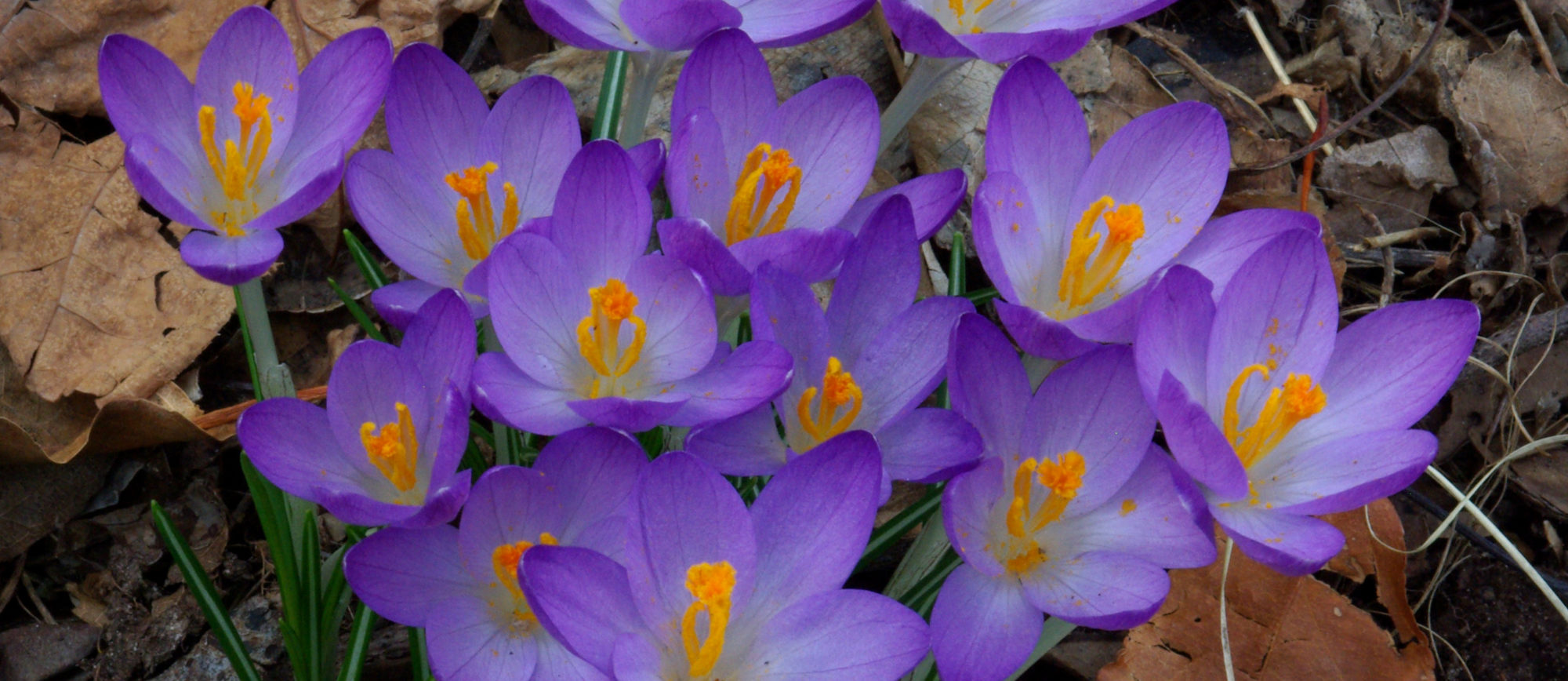LOUISIANA
22 pieces
The best Louisiana wood is the finest fossil wood there is: perfection and stunning mineralization together – a rare combination. It needs no glue. The wood is predominately palm and rarely live oak. Oligocene; Catahoula formation

1. Live Oak. Rare. I have seen a lot of Louisiana palm wood, and this is the one and only live oak I have come across. It was part of The Shreveport Collection. This full round slice owns a full page in Ancient Forests, with images in full size, macro, and micro, see page 72. Subdued gold and lavender make a lively background for well-preserved live oak cell structures including prominent, thick, rays. Beautiful overall balance and eye appeal. 19 by 13 cm polished face; 8 mm thick; eleven ounces.
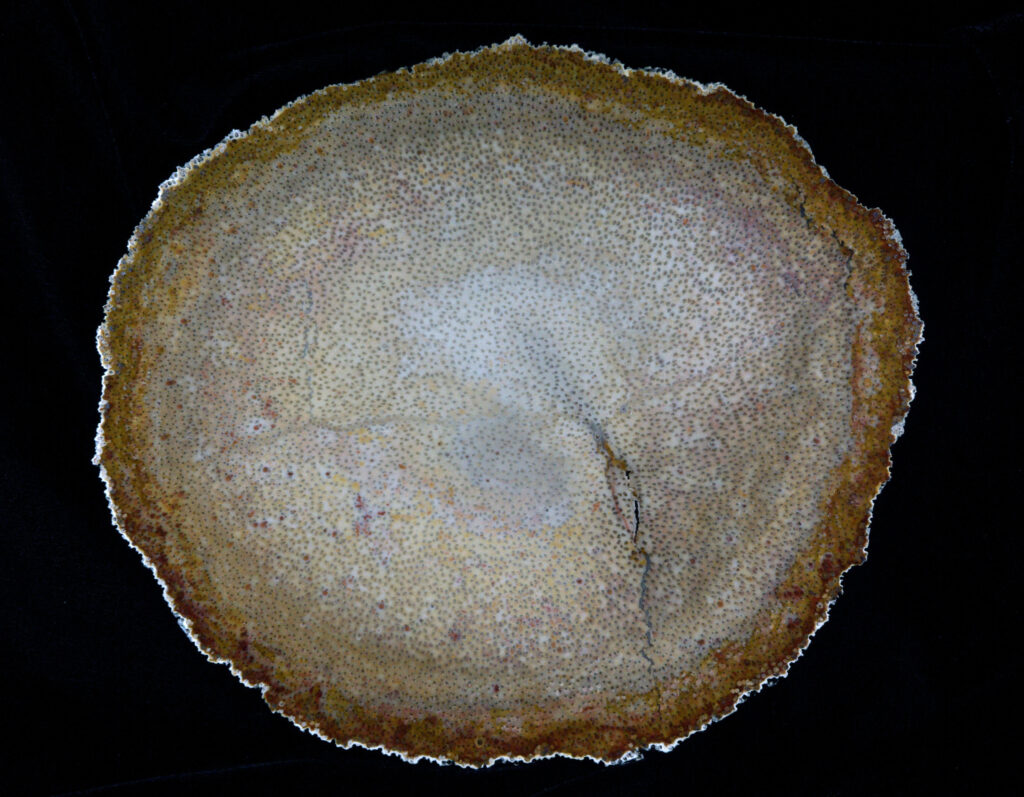
2. Full round slice. Perfect. Beautifully mineralized. Superior cell preservation. 19 by 22 cm polished face; 14 mm thick; two pounds and five ounces.

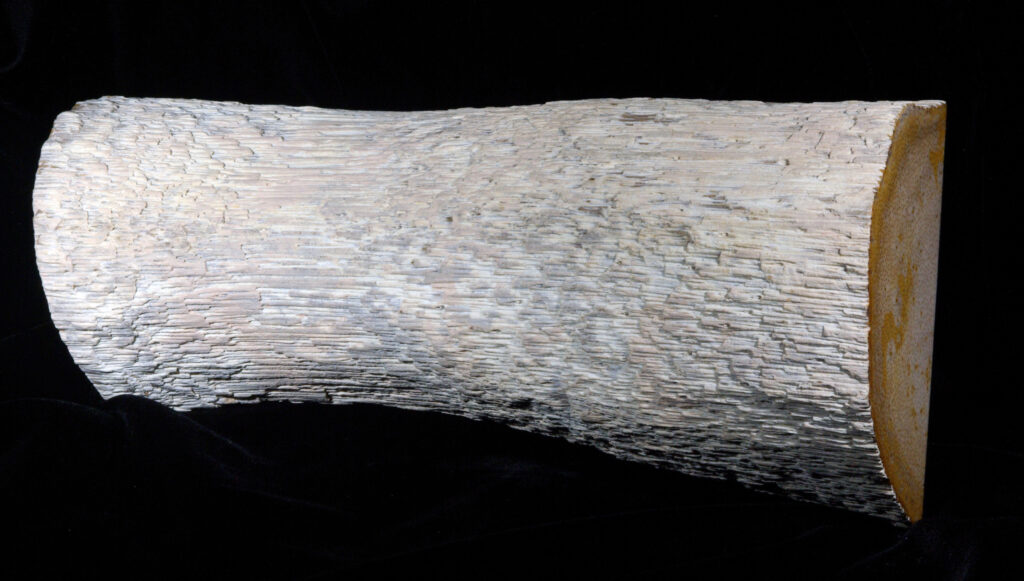
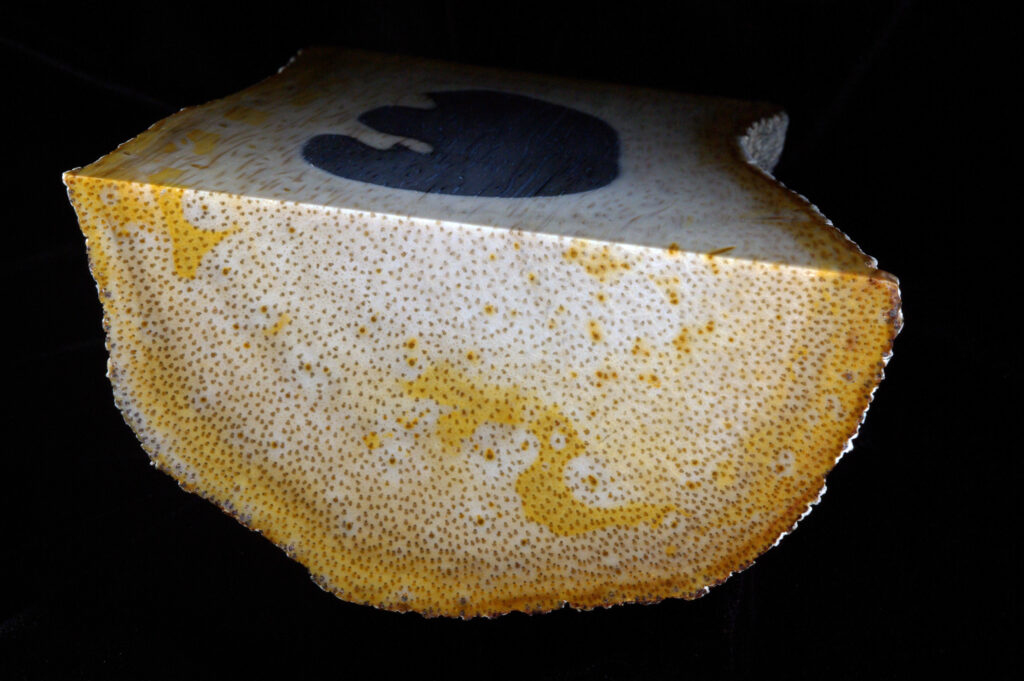
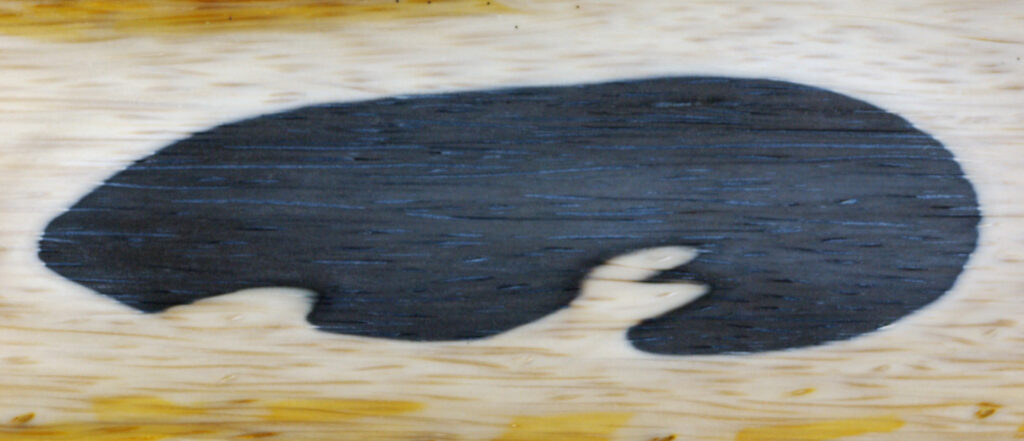
3. The Bear. I don’t recall how long after I returned to Colorado with The Shreveport Collection that I finally decided to cut this one. It was uncut/all natural when I acquired it. As with most fossil palm, when it decides to fracture, it goes lengthwise, often leaving lovely crystal encrusted vascular bundles along the edge of the separation. It was white on the exterior, indicating incubation in The White Ground, and the mineralization appeared solid, glassy, and colorful. Even now it plays music when you run your fingernail along the natural end. Due to its size, it was tricky to cut but my saw had an extra-long carriage bed of about 30 inches, which was enough once I cut off one end, which was necessary in order to secure it securely in my saw. The laboring saw blade, 24-inches in diameter, rotated for more than an hour as I paced nearby, like an expectant father. Thump as the cut was through and half the log fell into my saw. I waited several minutes to allow the oil mist to rain onto the vat of oil below. Upon opening the lid, I stared in disbelief at my twin bears: one male and one female. This is the male. Perfect, solid mineralization, including the glassy black bear. The Universe plays games. Appears in Ancient Forests on page 401. 36 by 13 cm polished face; 8 cm thick; fourteen pounds and nine ounces.
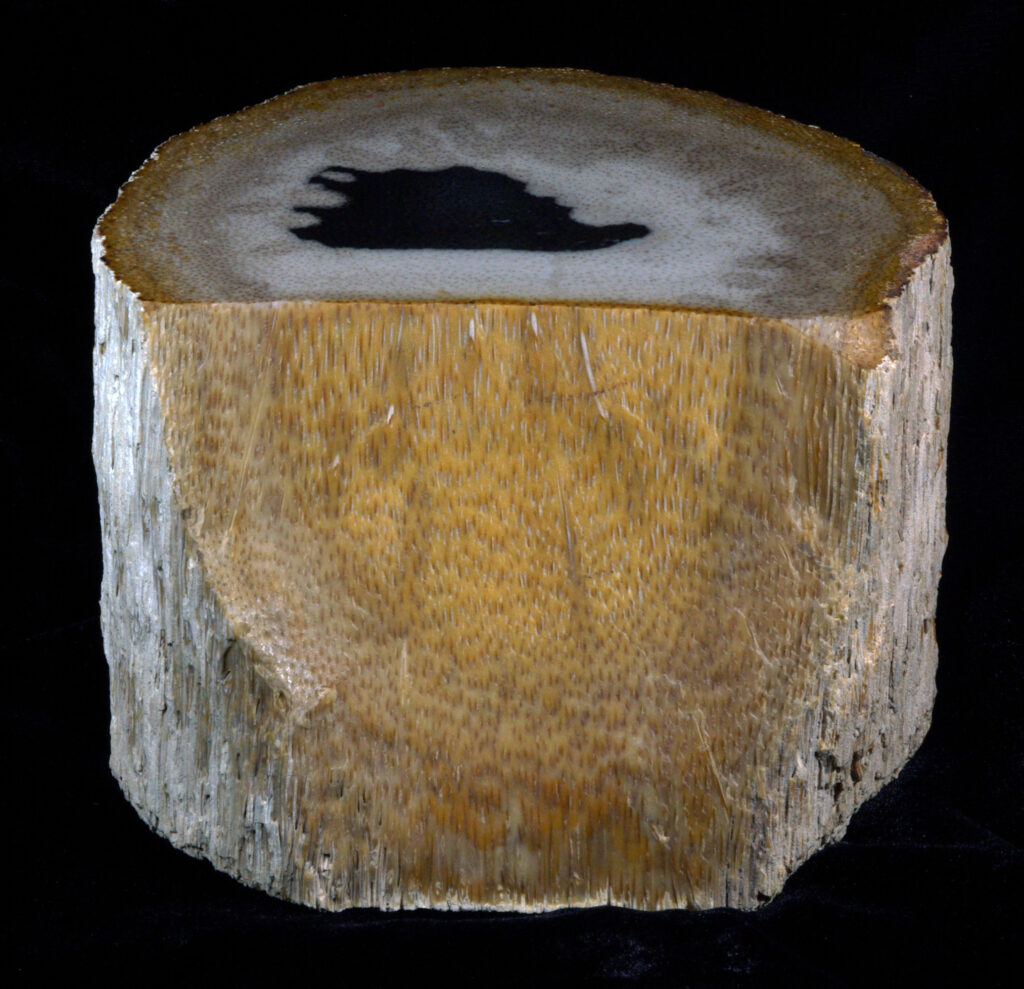
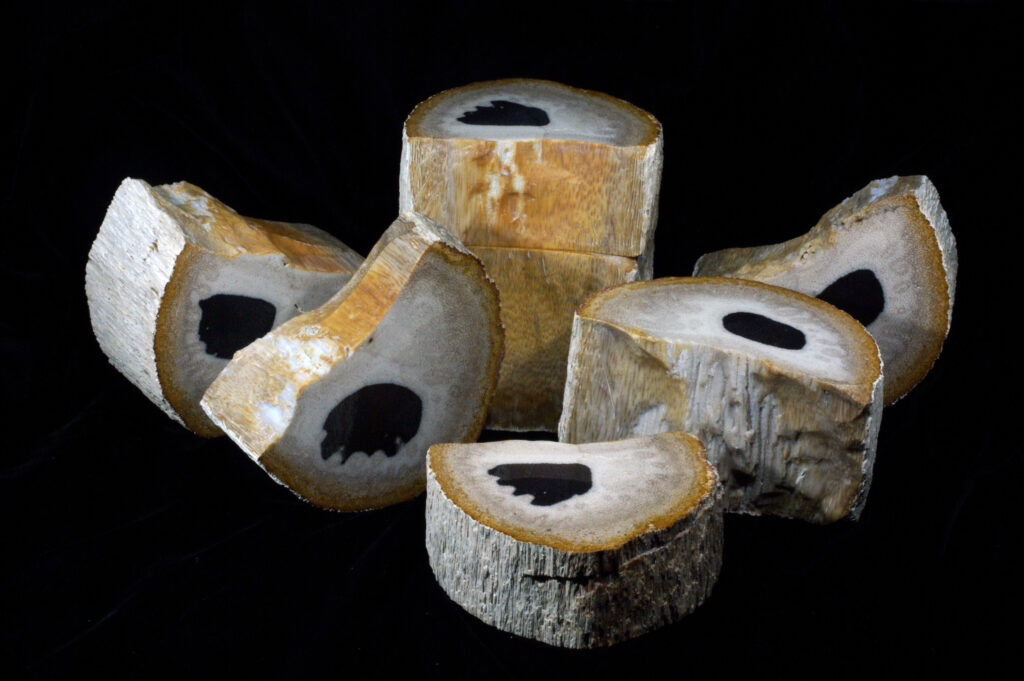
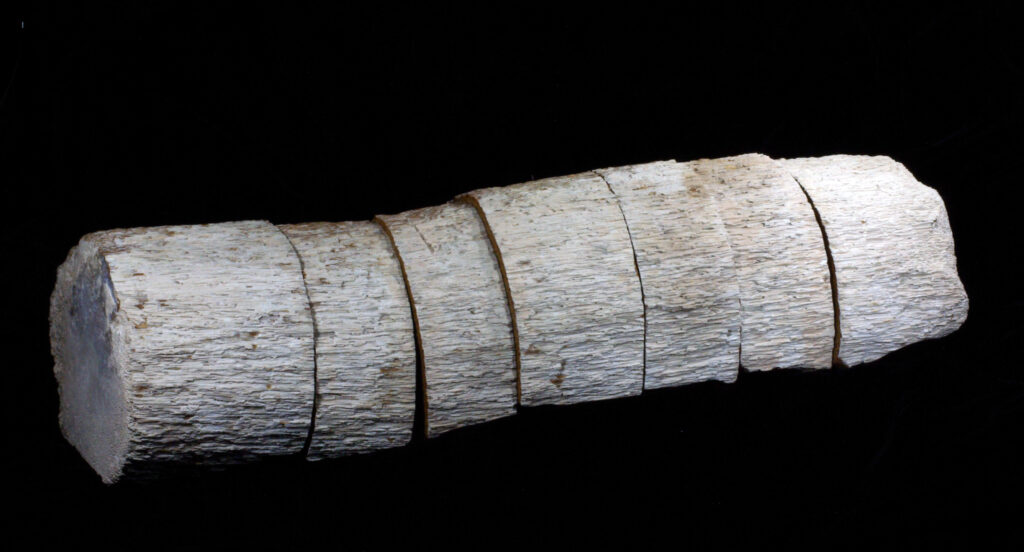

4-11. The Puzzle. This is another specimen round log from The Shreveport Collection that I could tell would be nice and likely black-centered. I cut it into seven cross-sections. The two ends are natural, and all twelve cut faces are polished. It’s top grade fossil palm. It can be pieced together in proper sequence by observing the shape of the spots. Makes a dramatic display. Overall, it’s 57 cm long and weighs 62 pounds. The largest polished face measures 19 by 11 cm.
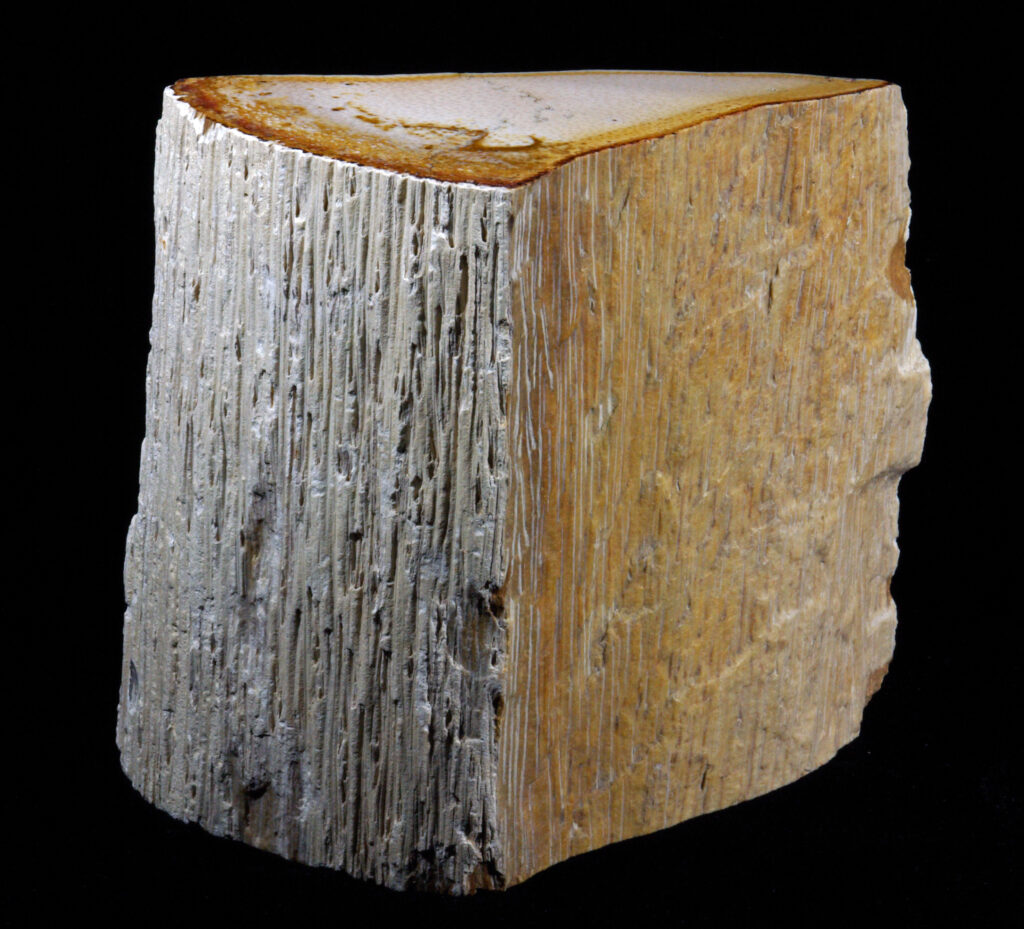
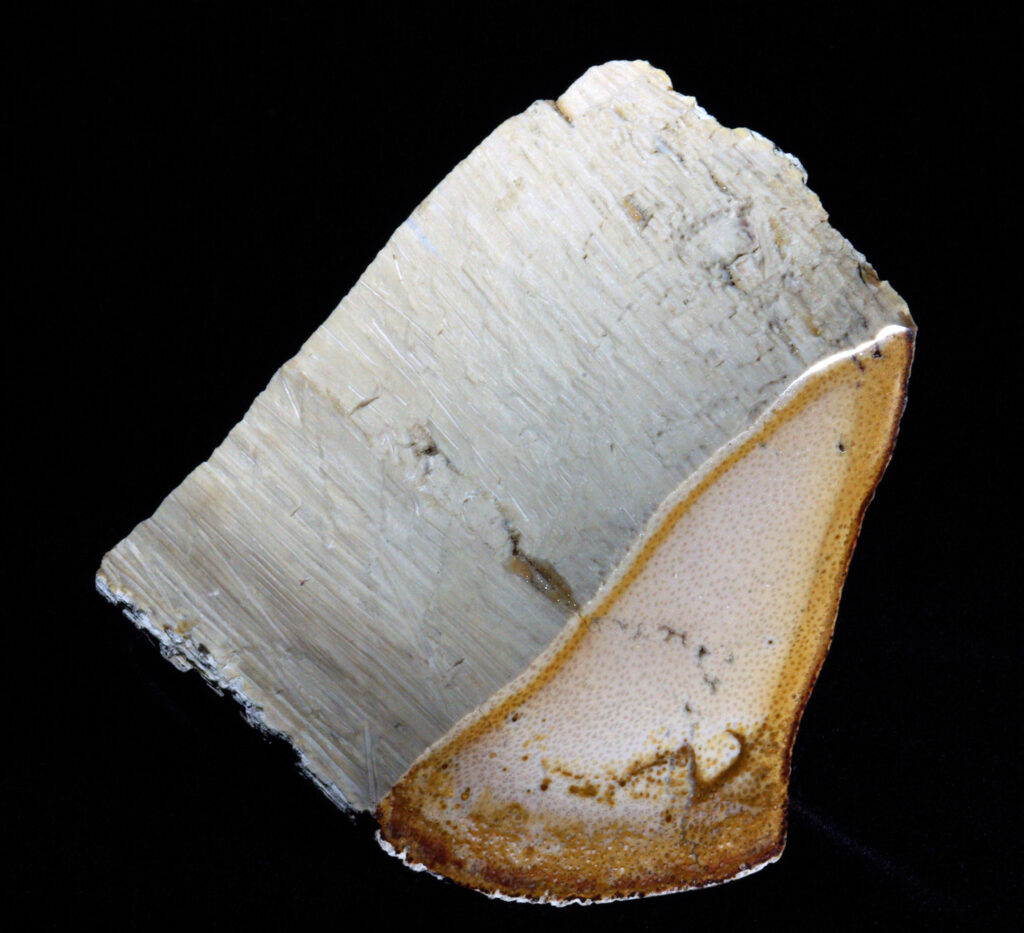

12. The Wedge. Specimen round, cut on both ends and polished on top. One characteristic of palmoxylon is the tendency to break along longitudinal axis due to the longitudinal bundles. The result can be interesting and attractive, as here where the white side is remarkably smooth and has a crystal-lined vug. This is one of my last two original Foshee-polished specimens from the Shreveport Collection. Cap Foshee was a high end finish carpenter (church interiors) who taught himself the art of cutting and polishing petrified wood as well as anyone, far better than most. Triangular face 14 by 11 by 9 cm; 14 cm tall; five pounds and thirteen ounces.
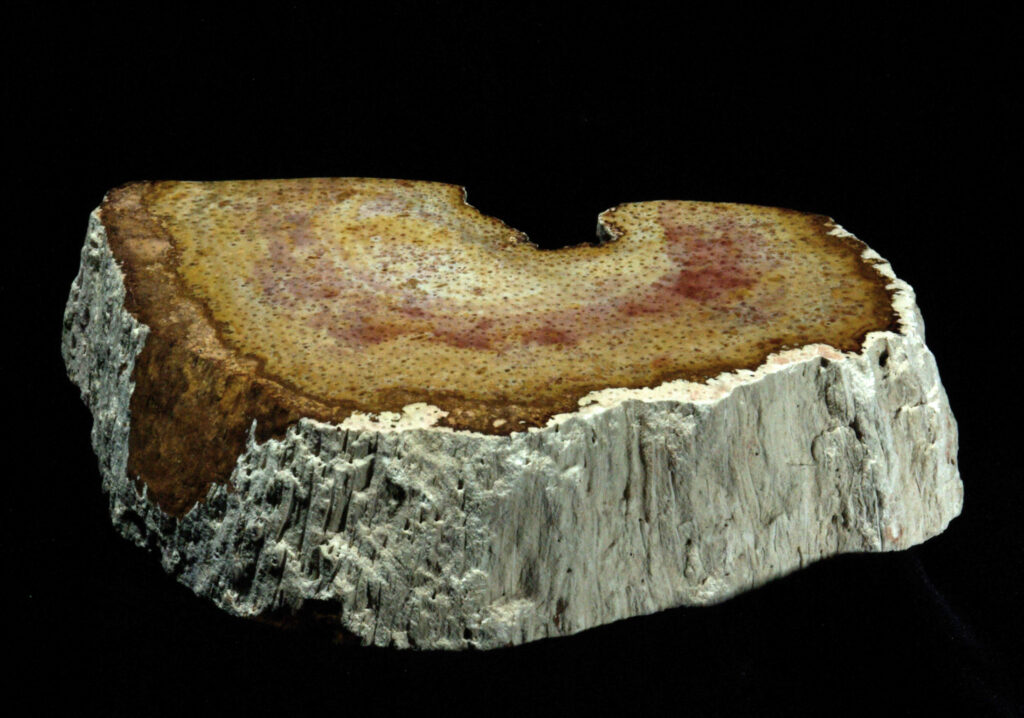
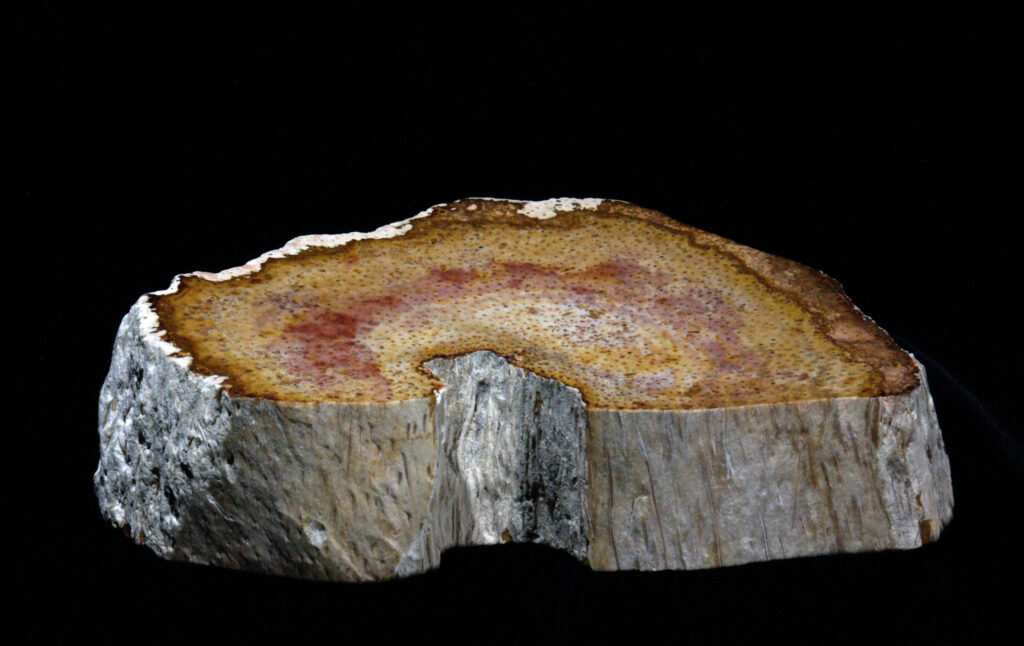

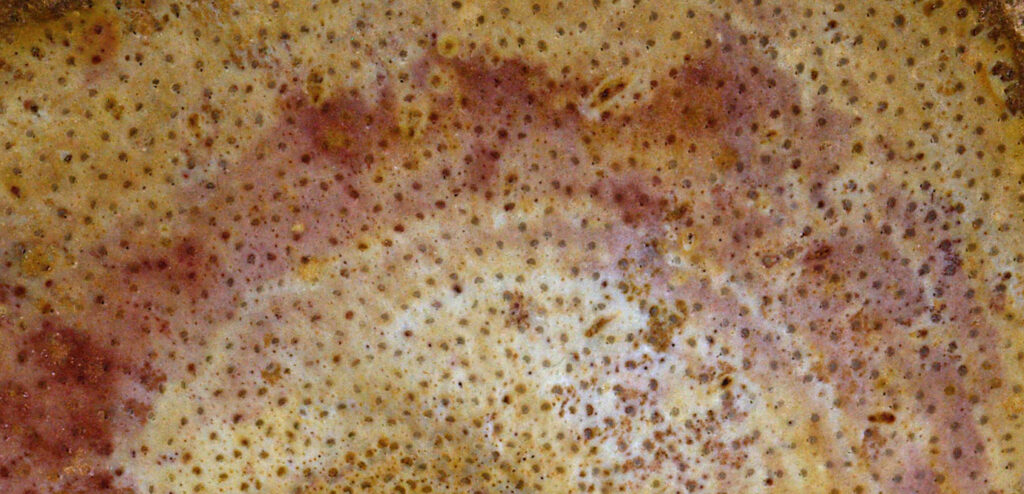
13. The Polka-dot Rainbow. Specimen round log section, cut and polished on both ends. Remarkable wide range rich coloring. Arch-shaped. 17 by 11 cm polished faces; 38 mm thick; three pounds and eleven ounces.
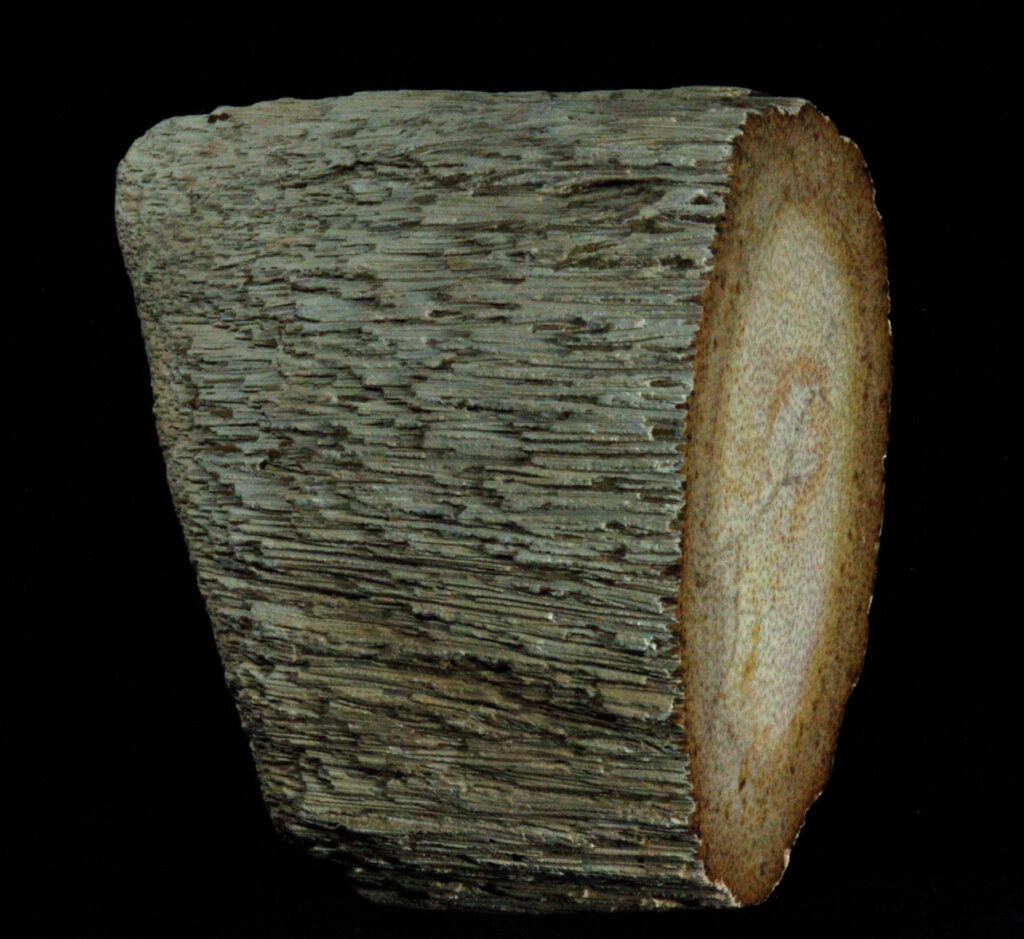
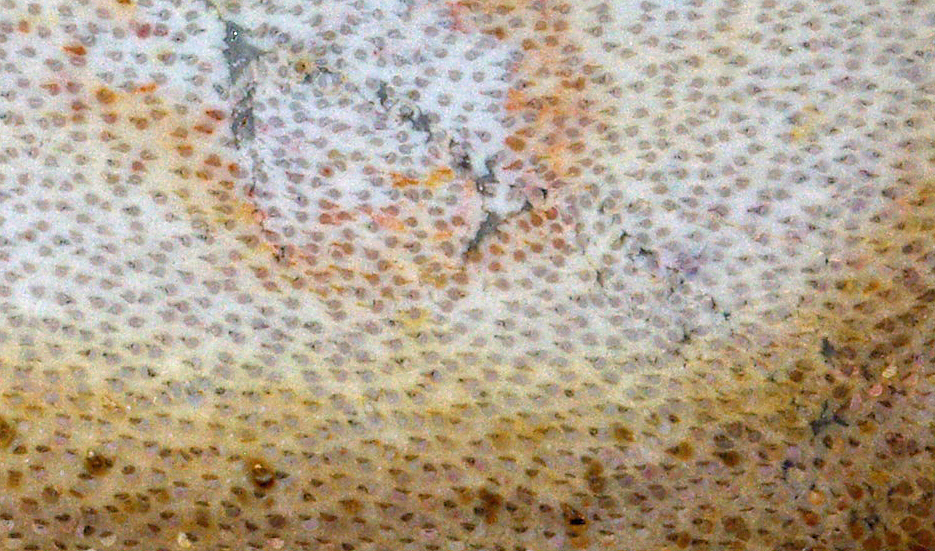

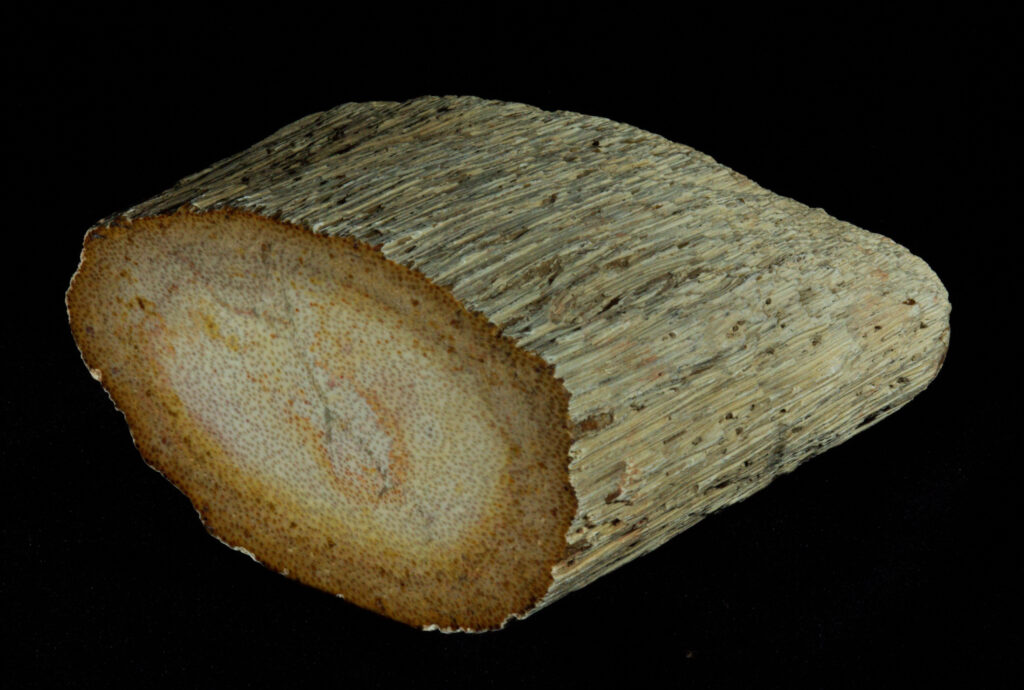
14. Full round log section, cut and polished on one end, otherwise all natural. Noteworthy quality. 12.5 by 7 cm polished face; 13 cm long; four pounds and four ounces.

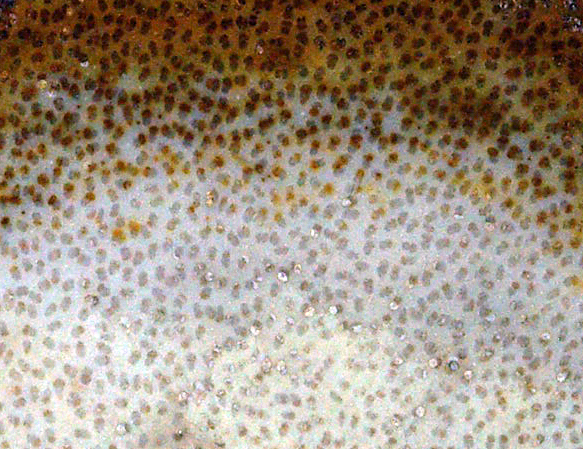

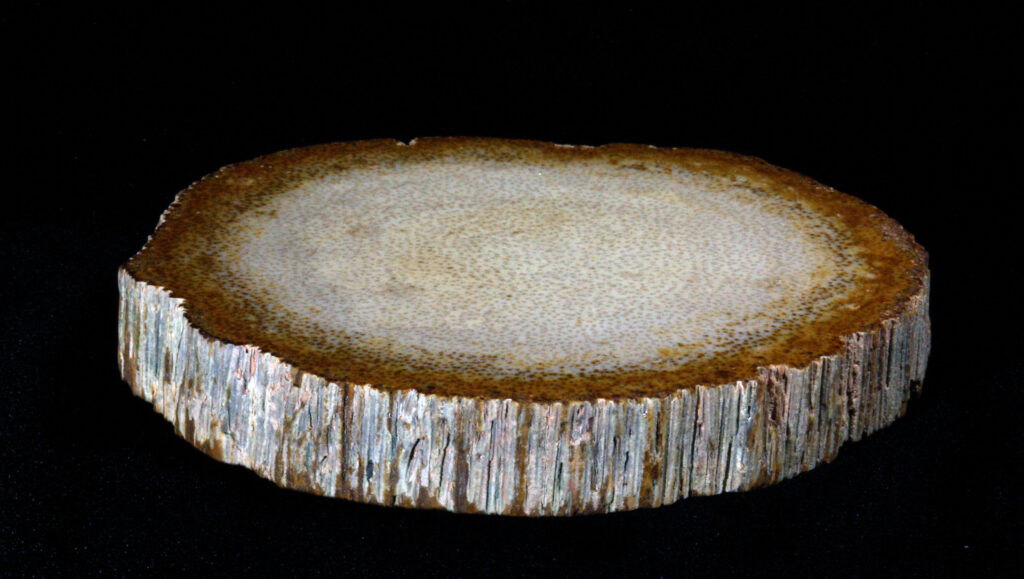
15. Full round slice, polished on both sides – thick. Exquisite mineralization. 12 by 14 cm polished faces; 21 mm thick; one pound and ten ounces.

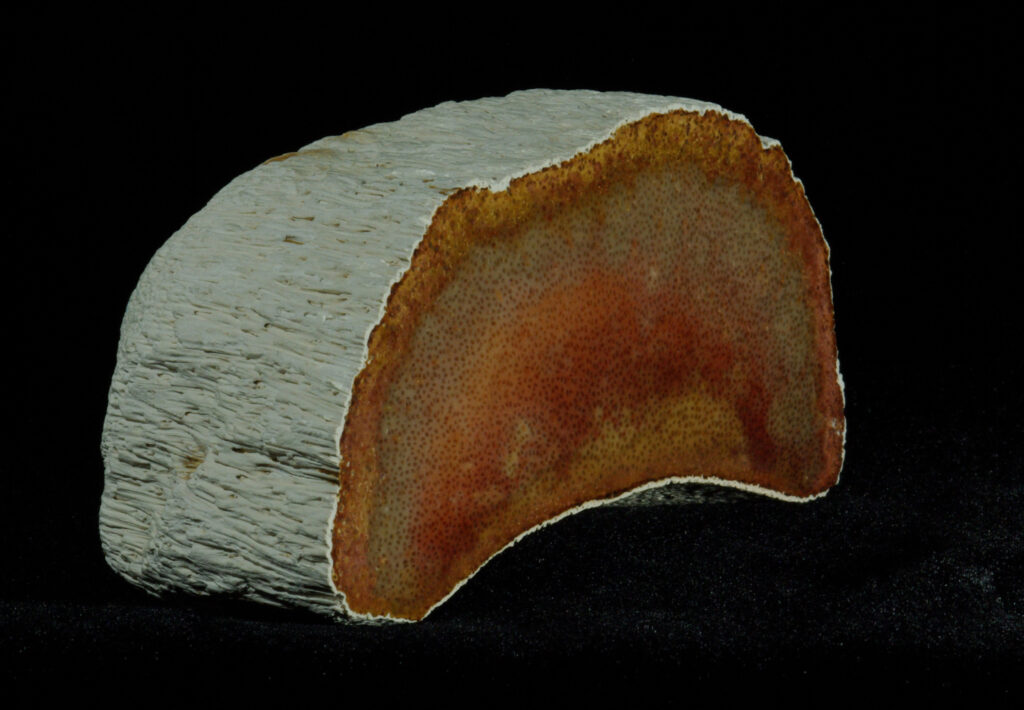



16. The Smile. Full round log section, cut and polished on one end, otherwise all natural. Rare, rich, coloring. Exterior evidences origin in the White Ground. This is one of my last two Foshee-polished specimens from the Shreveport Collection and is this one: “One small piece alone was so astounding that I knew I’d be buying the collection just to get it.” ( See footnotes.) As far as perfection and color go, I felt this was the top piece of the collection. There were many astounding pieces. Cap Foshee built his collection by always keeping the best of a log. He began buying and working the palmwood in the 1950s and continued into the late 1990s. I expect he bought and sold many tons of great wood over those decades, and this was piece with the most remarkable coloring. The rarity is difficult to calculate. Priceless. Half page feature on page 405 of Ancient Forests. 12 by 5 cm polished face; 5 cm thick; one pound and five ounces.
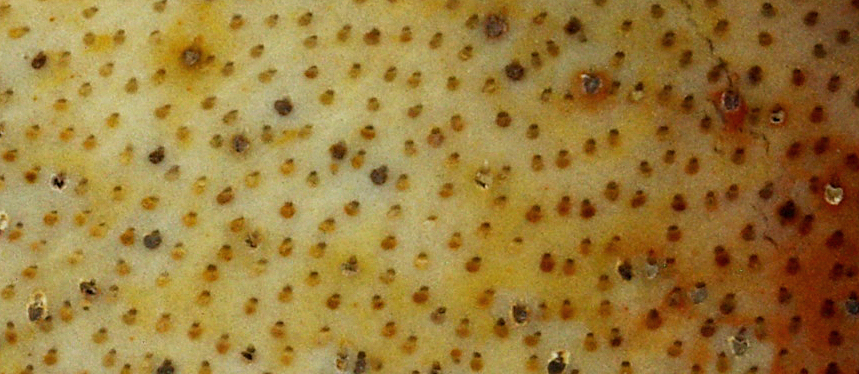
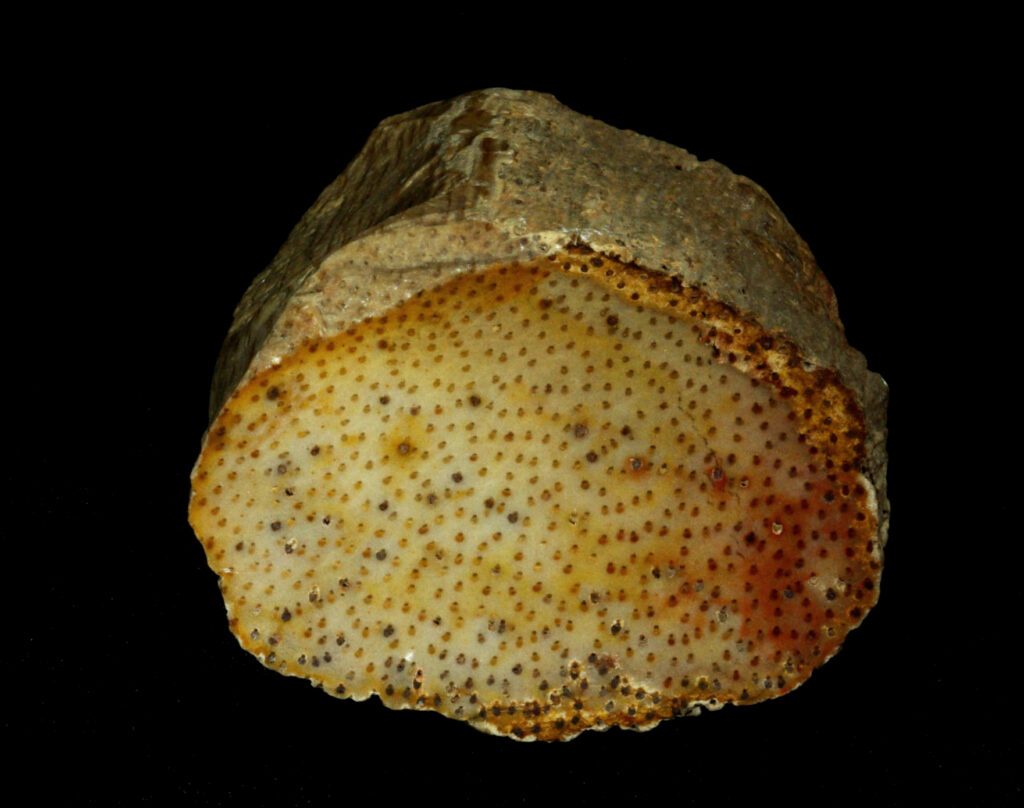
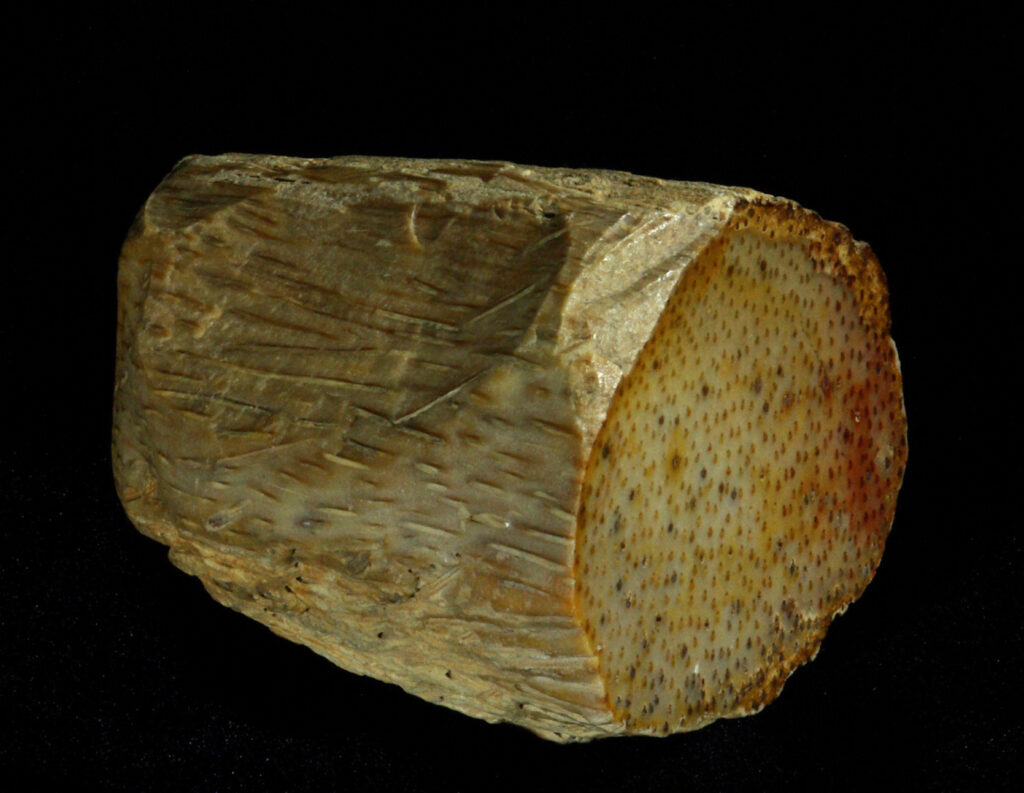
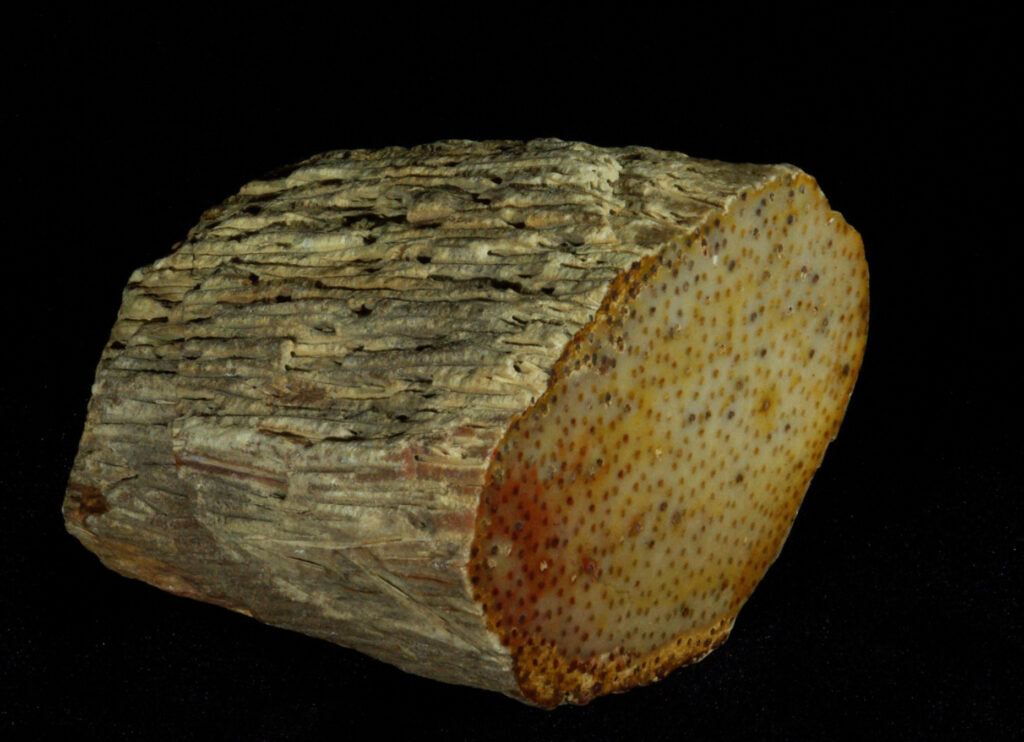
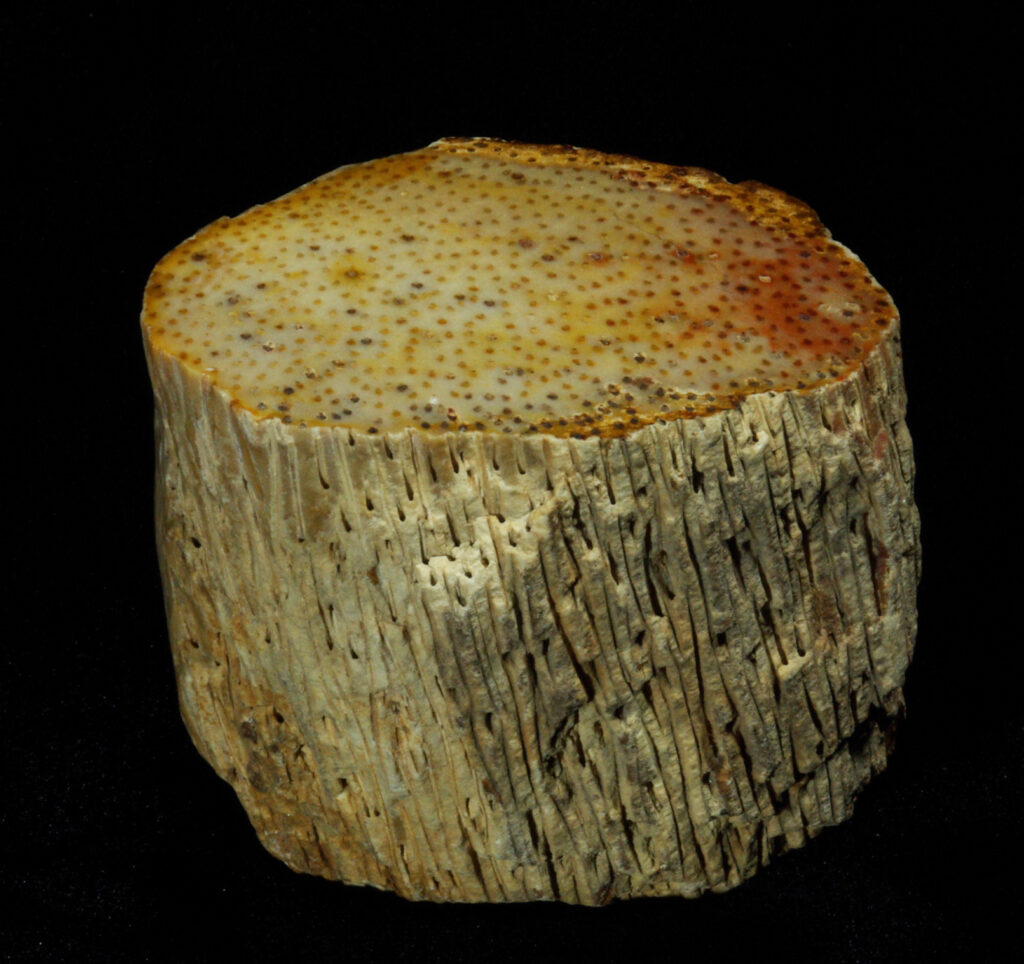
17. Full round log section, cut and polished on one end, otherwise all natural. Color sample. 62 by 82 mm polished face; 8 cm long; one pound and seven ounces.
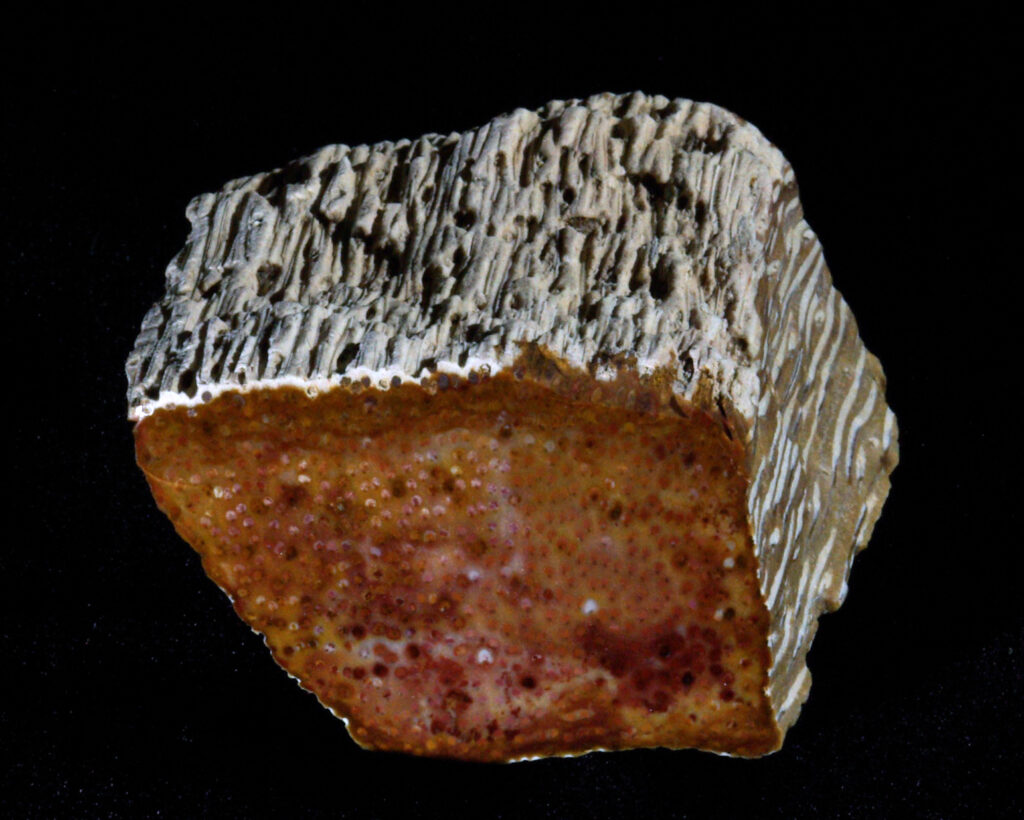


18. Specimen round chunk, cut and polished on one end, otherwise all natural. Color sample. 43 by 60 mm polished face; 96 mm long; one pound.



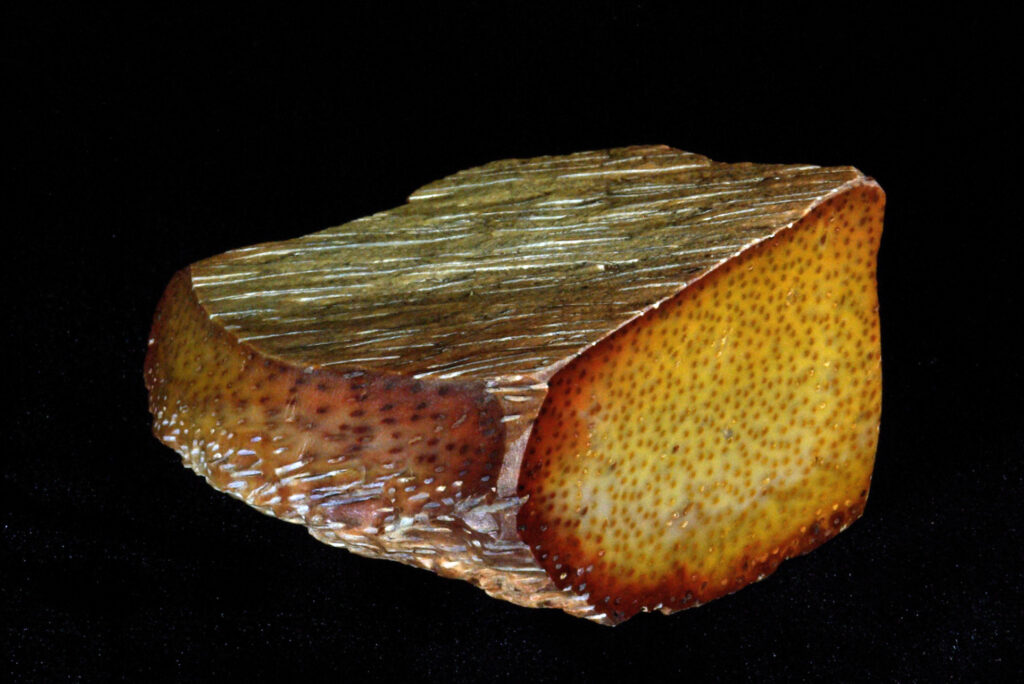
19. Specimen round chunk, cut and polished on one end, otherwise all natural. Color sample (Poor Boy). 77 by 46 mm polished face; 80 mm long; fifteen ounces.
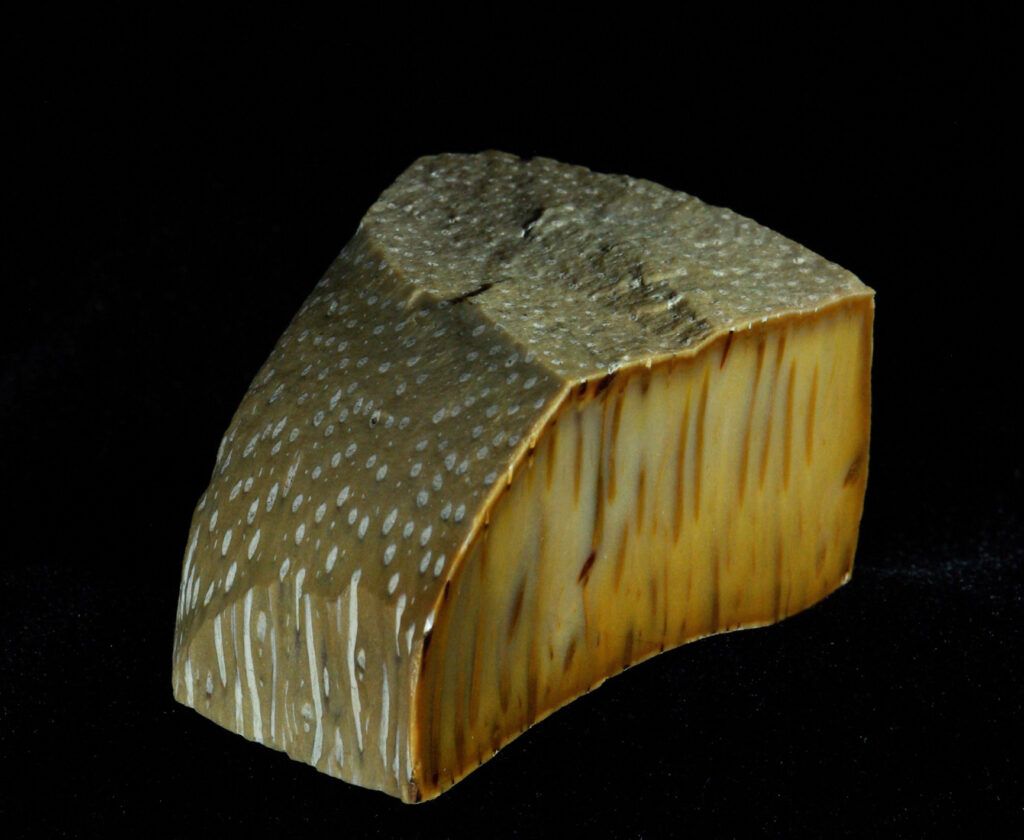
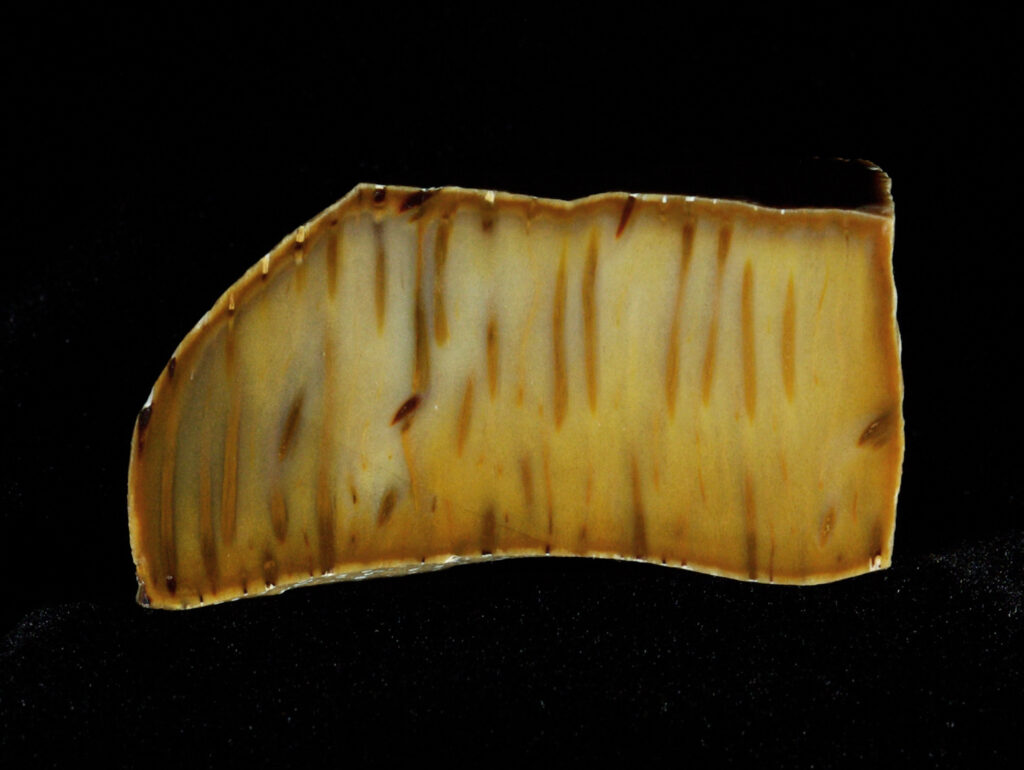
20. Specimen round chunk, cut and polished on one end, otherwise all natural. Color sample (Poor Boy). 34 by 68 mm polished face; 49 mm thick; 7.5 ounces.

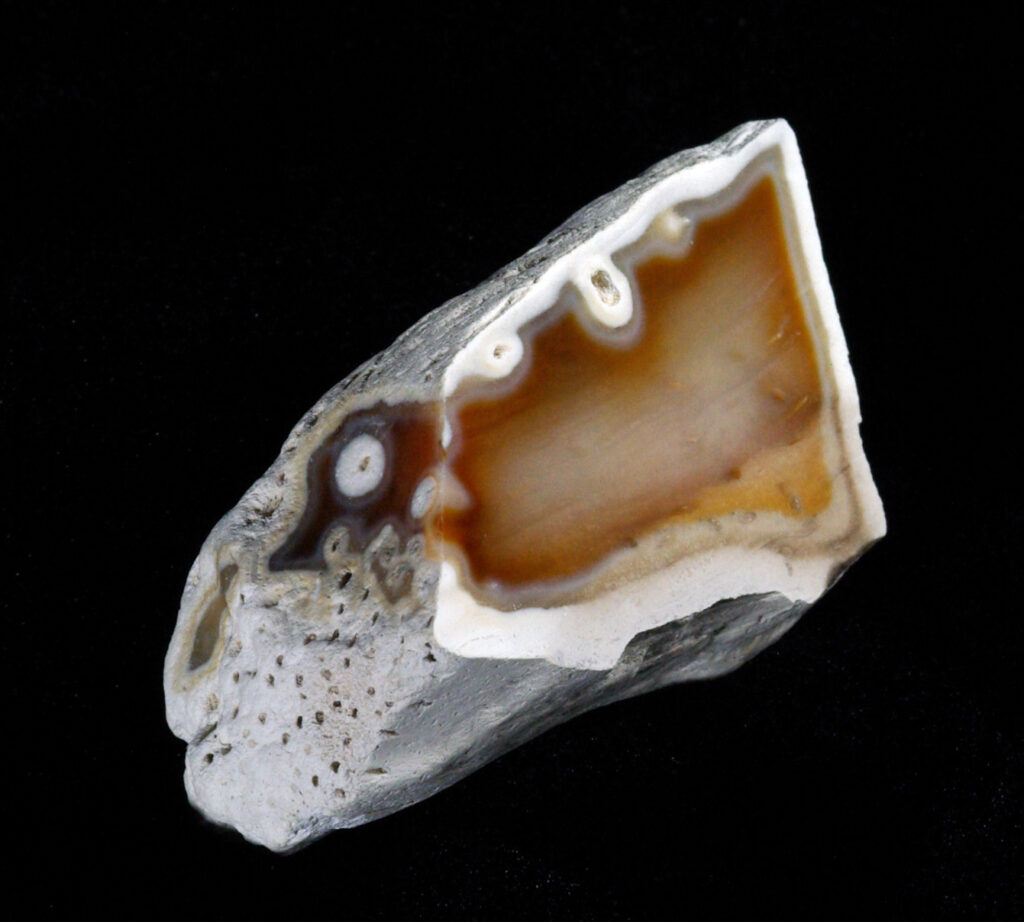


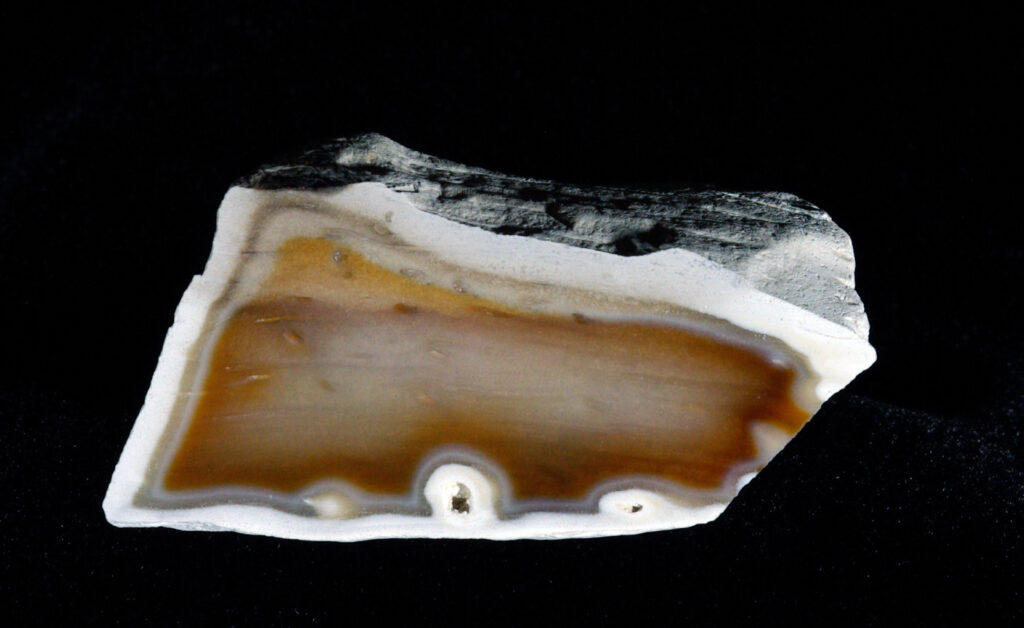
21.. Specimen round chunk, cut and polished on one face otherwise all natural. The White Ground. Glassy. 30 by 55 mm polished face; 39 mm thick; 3.3 ounces.
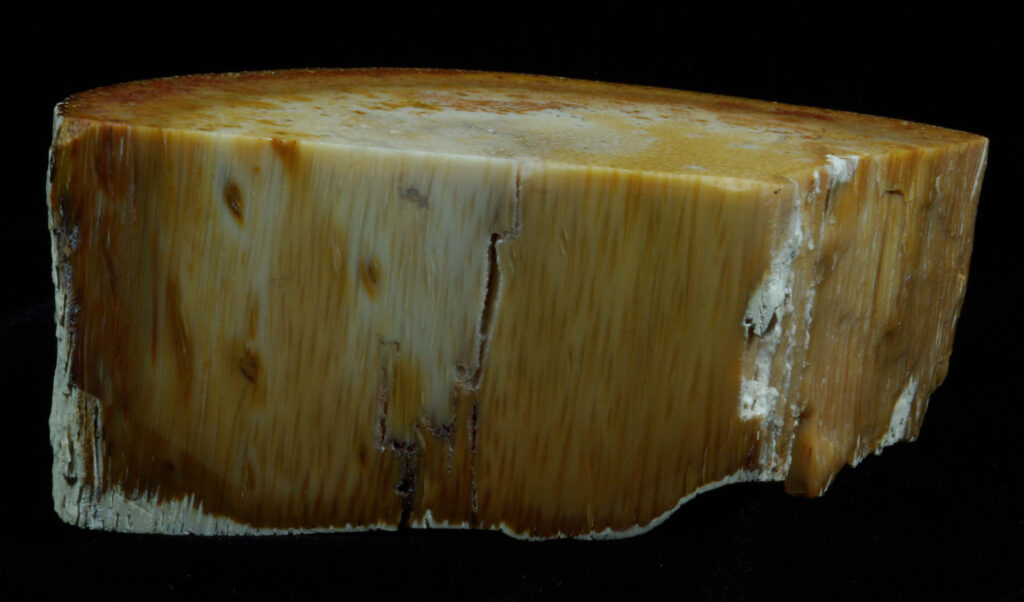
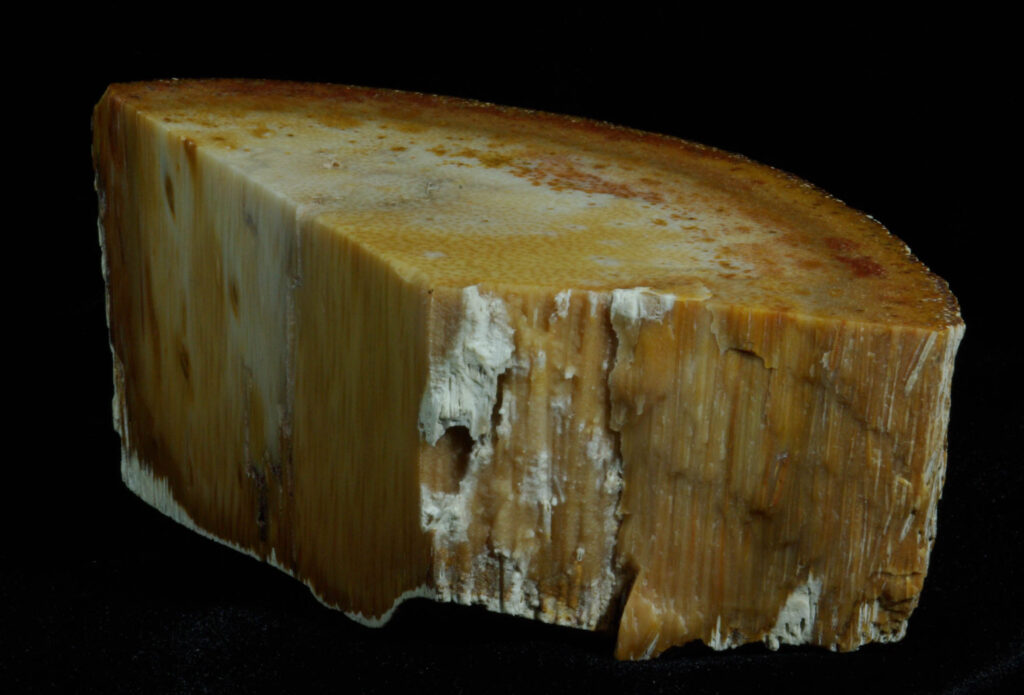
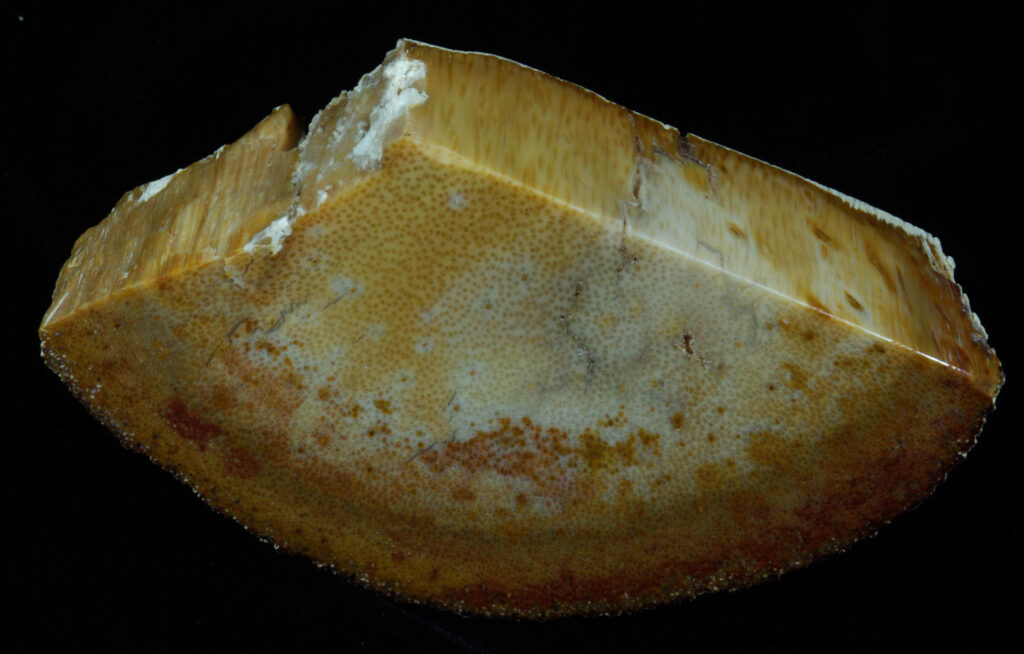


22. Study piece. Extra nice Flatwoods specimen cut to display common features. One end natural; one end cut; one side cut, and one side as found, which is a common occurrence for palm wood as the lengthwise support system comprising vascular bundles has a tendency to cleave along the long axis, frequently resulting in an attractive, druzy mineralization. 14.5 by 7.5 cm polished end; 5 by 10 cm polished side; one pound and fifteen ounces.
END LOUISIANA
